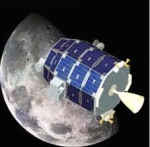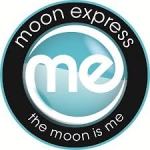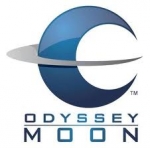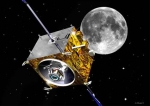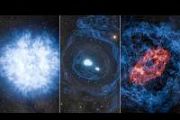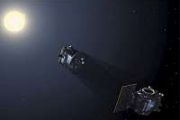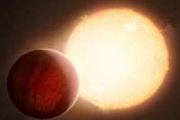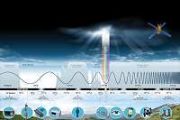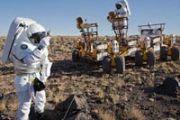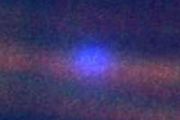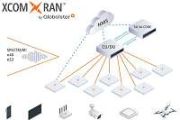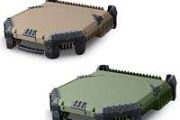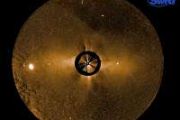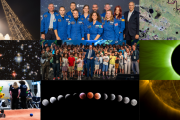Displaying items by tag: Moon
Lunar Atmosphere and Dust Environment Explorer (LADEE)
The Lunar Atmosphere and Dust Environment Explorer (LADEE) is is a small space observatory that will study the moon's thin atmosphere and dust above the lunar surface.
NASA's LADEE spacecraft is scheduled for launch in early 2013.
To carry out the mission, NASA will send a robotic spacecraft into orbit around the Moon, and use instruments aboard the spacecraft to study the Moon's atmosphere and dust in the Moon's vicinity. Instruments will include a dust detector, a neutral mass spectrometer, an ultraviolet-visible spectrometer, and recently announced, a laser communications (lasercomm) terminal.
LADEE was announced during the presentation of NASA's FY09 budget in February 2008. It will be launched aboard a Minotaur V from the Mid-Atlantic Regional Spaceport.
Google Lunar X Prize
The Google Lunar X PRIZE, abbreviated GLXP, sometimes referred to as Moon 2.0, is a space competition organized by the X Prize Foundation, and sponsored by Google.
It was announced at the Wired Nextfest on 13 September 2007. The challenge calls for privately-funded spaceflight teams to compete in successfully launching, landing, and then traveling across the surface of the Moon with a robot, while also sending back to Earth specified images and other data.
Moon Express Inc.
Moon Express, or MoonEx, is a privately held early stage company formed by a group of Silicon Valley and space entrepreneurs, with the goal of winning the Google Lunar X Prize, and ultimately mining the Moon for resources of economic value.
Odyssey Moon Ltd
Odyssey Moon has been formed to capitalize on commercial opportunities created by renewed interests in exploring the Moon. The Company is developing a commercial lunar robotic transportation service to meet the pent up and growing demand for low cost, frequent access to the Moon supporting science, exploration and commerce.
- Commercial delivery of private & government payloads to the Moon for science, exploration and commerce
- Operating analogous to a “FedEx to the Moon” model
- Airline approach to pricing; condominium like cost sharing
- A family of modular lunar landers based on proven technology and a Common Spacecraft Bus
- Low cost, reliable missions and scalable adaptation
SMART-1
SMART-1 was the first European Lunar mission and a technology demonstrator of Deep Space Electric Propulsion.
It was launched in October 2003, reached the moon observation orbit in 2005 and carried out lunar science experiment till controlled crash on the lunar surface in September 2006.
GRAIL
GRAIL =Gravity Recovery and Interior Laboratory
The Gravity Recovery and Interior Laboratory (GRAIL) is an American lunar science mission in NASA's Discovery Program, which will use high-quality gravitational field mapping of the Moon to determine its interior structure. The two small spacecraft GRAIL A and GRAIL B were launched on 10 September 2011 aboard a single launch vehicle: the most-powerful configuration of a Delta II, the 7920H-10. GRAIL A separated from the rocket about nine minutes after launch, GRAIL B followed about eight minutes later. They will arrive at their orbits around the Moon 24 hours apart.
The science phase of the mission will last for 90 days. Following the science phase (or extended mission phase), a five-day decommissioning period is planned, after which the spacecraft will impact the lunar surface in about 40 days.[6] The gravity mapping technique is similar to that used by Gravity Recovery and Climate Experiment (GRACE), and the spacecraft design is based on XSS-11.
Unlike the Apollo program missions, which took three days to reach the Moon, GRAIL will make use of a three- to four-month low-energy trans-lunar cruise via the Sun-Earth Lagrange point L1 to reduce fuel requirements, protect instruments and reduce the velocity of the two spacecraft at lunar arrival to help achieve the extremely low 50 km (31 mi) orbits with separation between the spacecraft (arriving 24 hours apart) of 175 to 225 km (109 to 140 mi). The very tight tolerances in the flight plan leaves little room for error correction leading to a launch window lasting one second and providing only two launch opportunities per day.
The planned orbital insertion dates are December 31, 2011 (for GRAIL-A) and January 1, 2012 (for GRAIL-B).
NASA's Jet Propulsion Laboratory manages the project.
The GRAIL mission will place two spacecraft into the same orbit around the Moon. As they fly over areas of greater and lesser gravity, caused both by visible features such as mountains and craters and by masses hidden beneath the lunar surface, they will move slightly toward and away from each other. An instrument aboard each spacecraft will measure the changes in their relative velocity very precisely, and scientists will translate this information into a high-resolution map of the Moon's gravitational field.
This gravity-measuring technique is essentially the same as that of the Gravity Recovery And Climate Experiment (GRACE), which has been mapping Earth's gravity since 2002.
Objectives
GRAIL's engineering objectives are to enable the science objectives of mapping lunar gravity and using that information to increase understanding of the Moon's interior and thermal history. Getting the two spacecraft where they need to be, when they need to be there, requires an extremely challenging set of maneuvers never before carried out in solar system exploration missions. Mission design
The two GRAIL spacecraft will be launched together and then will fly similar but separate trajectories to the Moon after separation from the launch vehicle, taking about 3 to 4 months to get there. They will spend about 2 months reshaping and merging their orbits until one spacecraft is following the other in the same low-altitude, near-circular, near-polar orbit, and they begin formation-flying. The next 82 days will constitute the science phase, during which the spacecraft will map the Moon's gravitational field.
Spacecraft and payload
The two GRAIL spacecraft are near-twins, each about the size of a washing machine, with minor differences resulting from the need for one specific spacecraft (GRAIL-A) to follow the other (GRAIL-B) as they circle the Moon.
The science payload on each spacecraft is the Lunar Gravity Ranging System, which will measure changes in the distance between the two spacecraft down to a few microns -- about the diameter of a red blood cell. Each spacecraft will also carry a set of cameras for MoonKAM, marking the first time a NASA planetary mission has carried instruments expressly for an education and public outreach project.

